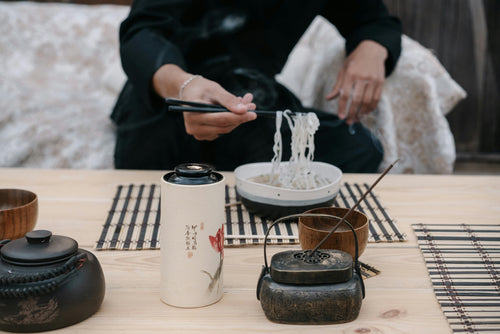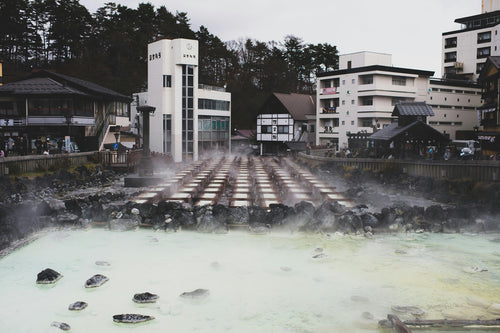
Best Seasons for Traveling in Japan
Japan is a country of diverse climates, stunning landscapes, and a rich tapestry of seasonal festivals. With each season offering unique experiences, knowing the best times to visit can make a significant difference in the quality of your travel. Whether you’re after cherry blossoms in spring, cool mountain retreats in summer, vibrant autumn foliage, or the winter wonderland of snowy Hokkaido, this guide covers the best seasons for visiting Japan, highlighting the advantages, popular activities, and regional specialties each season offers.
Contents
3. Autumn (September - November)
4. Winter (December - February)
1. Spring (March - May)
Spring is one of the most popular times to visit Japan, as the country comes alive with cherry blossoms (sakura), mild weather, and a festive atmosphere. Sakura season, typically from late March to early April, is a magical time when cherry blossoms bloom across Japan, from Okinawa in the south to Hokkaido in the north. Hanami, the tradition of cherry blossom viewing, draws crowds to parks, temples, and riversides to enjoy picnics under the pink blossoms.
Beyond cherry blossoms, spring offers other beautiful flowers such as plum blossoms, wisteria, and tulips, as well as cultural events like the Takayama Spring Festival and Kyoto’s Miyako Odori dance performances. The mild temperatures and low humidity make it ideal for outdoor activities and exploring historical sites.
Highlights: Cherry blossoms, hanami (flower viewing), vibrant festivals, and mild weather.
2. Summer (June - August)
Summer in Japan is hot and humid, especially in urban areas like Tokyo and Osaka. However, this season also brings exciting festivals, lush green landscapes, and lively fireworks displays (hanabi taikai). The Japanese Alps, Hokkaido, and other mountainous regions provide cooler, refreshing escapes for hiking and nature activities, attracting travelers looking for outdoor adventure.
Early summer is marked by tsuyu (the rainy season), primarily affecting areas from Tokyo southward. Despite the rain, summer is a vibrant time with colorful festivals like Gion Matsuri in Kyoto, Awa Odori in Tokushima, and Nebuta Matsuri in Aomori. Fireworks shows are a highlight, with some of the biggest displays occurring in Sumida River and Tokyo Bay.
Highlights: Fireworks festivals, traditional summer festivals, beach visits, and cooler mountain retreats in Hokkaido and the Japanese Alps.
3. Autumn (September - November)
Autumn is considered one of the best seasons to visit Japan due to the stunning fall foliage, pleasant weather, and cultural festivals. The changing colors of the leaves, or koyo, transform mountains, temples, and parks into vibrant displays of red, orange, and yellow. Popular koyo spots include Kyoto’s Arashiyama, Tokyo’s Rikugien Garden, and Nikko’s mountainous landscape.
September still sees remnants of the summer heat and occasional typhoons, but October and November bring cooler, more stable weather. Autumn is also harvest season, a great time for food lovers to enjoy seasonal specialties like sweet potatoes, chestnuts, and matsutake mushrooms. Various regional festivals, such as the Jidai Matsuri in Kyoto, add a cultural touch to the autumn experience.
Highlights: Fall foliage (koyo), cultural festivals, seasonal foods, and comfortable temperatures for sightseeing.
4. Winter (December - February)
Winter in Japan is known for its snow-covered landscapes, especially in northern regions and mountainous areas. Hokkaido, the Japanese Alps, and areas like Nagano and Niigata offer fantastic skiing and snowboarding opportunities. Japan’s famous “snow monsters” (frost-covered trees) in Zao Onsen are a winter spectacle worth seeing, and hot spring bathing (onsen) amidst the snow is a quintessential winter experience.
Winter also brings enchanting illuminations across major cities, with Tokyo, Kobe, and Osaka boasting spectacular light displays. For those visiting in February, the Sapporo Snow Festival features elaborate ice sculptures and a winter wonderland atmosphere. Winter in Japan also provides an opportunity to try traditional New Year’s dishes and observe the cultural customs of oshogatsu (Japanese New Year).
Highlights: Skiing and snowboarding, winter festivals, hot spring bathing in snowy landscapes, and festive illuminations.
5. Travel Tips for Each Season
Spring Tips: Pack layers as temperatures can fluctuate, and plan your cherry blossom viewings in advance to avoid crowds. The cherry blossom forecast is updated annually, so checking dates helps ensure you visit at peak bloom.
Summer Tips: Stay hydrated, wear light clothing, and use sunscreen to cope with the heat and humidity. If you’re attending festivals or fireworks displays, arrive early to secure a good viewing spot.
Autumn Tips: Layering is recommended as temperatures cool down, especially in the mountains. For the best fall foliage experience, research peak times for different regions as they vary across the country.
Winter Tips: Dress warmly with waterproof clothing if visiting snowy areas. Book accommodations and ski passes in advance during peak winter sports season. Winter illuminations are popular, so plan your visits during weekdays if possible to avoid larger crowds.
6. Conclusion: Choosing the Best Season for You
Choosing the best season to visit Japan depends on your interests and travel style. Spring and autumn are ideal for mild weather and natural beauty, while summer offers lively festivals and beach destinations. Winter is perfect for snow sports enthusiasts and those looking to experience Japan’s serene snowy landscapes. Each season provides a unique view of Japan’s natural and cultural wonders, making it a destination worth exploring year-round.
Whether you’re drawn to cherry blossoms, colorful festivals, or serene winter scenes, Japan offers unforgettable experiences in every season. By planning your visit around the seasonal highlights that appeal to you most, you’re sure to have an enriching and memorable journey.
分享
You may also like
-

日本和服遺產:象徵意義、風格和觀賞地點
和服是日本的傳統服裝,是日本文化的美麗象徵。從複雜的圖案和顏色到穿著方式,和服體現了幾個世紀的歷史、傳統和藝術。和服最初是男女的日常服裝,現已發展成為一種文化標誌,通常在特殊場合和儀式中穿著。每件和服都透過其顏色、圖案和布料講述一個故...
-

去日本旅遊時要注意的禮儀
日本文化充滿尊重、禮貌和體貼,使得禮儀成為日常生活中不可或缺的一部分。對於遊客來說,了解日本的習俗和禮儀可以增強旅行體驗並表達對該國文化價值觀的欣賞。了解日本禮儀的基本知識將幫助您應對社交場合、尊重當地習俗並給您遇到的人留下積極的印象...
-

日本三大溫泉:名湯指南
日本以其天然溫泉或“onsen”(溫泉)而聞名,為遊客提供了在美麗風景中在富含礦物質的水中放鬆身心和恢復活力的獨特機會。在全國數千個溫泉中,有三個溫泉因其歷史意義、治癒效果和無與倫比的美麗而贏得了“日本三大溫泉”(*日本三名泉*)的稱...
-

日本 5 座著名城堡:歷史與亮點
日本擁有世界上一些最美麗、最具歷史意義的城堡。這些城堡建於封建時代,是堡壘、住宅和權力的象徵。如今,它們已成為文化瑰寶,讓遊客可以一睹日本豐富的歷史和輝煌的建築。本指南探索日本最著名的五座城堡,每座城堡都有獨特的特色和迷人的歷史。從雄...




